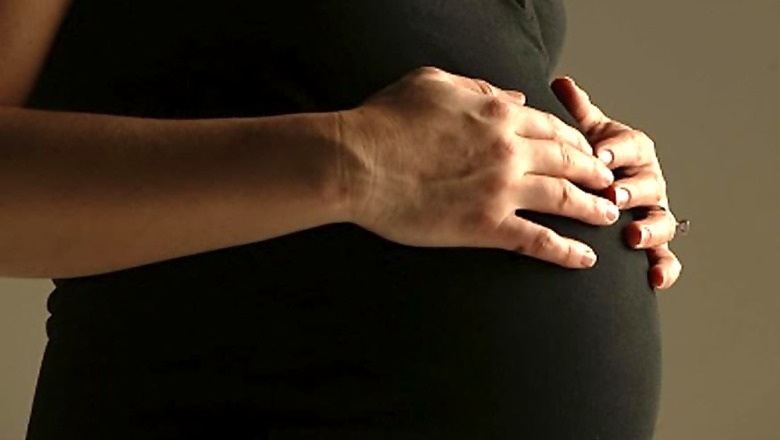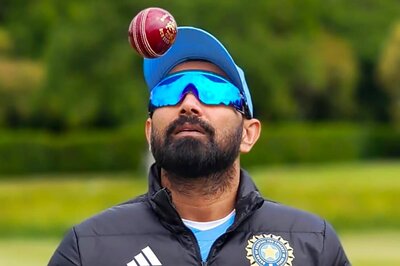
views
New Delhi: A PIL in the Supreme Court for allowing a 10-year-old rape survivor to abort in the 26th week of her pregnancy has put the spotlight yet again on India's law on termination of pregnancy.
At the Centre of this issue lies the "life versus life" debate and the legal dilemma that surrounds it.
Section 3(2)(b) of the Medical Termination of Pregnancy Act (MTPA), 1971, bars abortion after the 20th week. Notably, the Indian law did not allow abortion before 1971 and, therefore, legalising abortion for a 24-year-old democracy was a great leap.
The MTPA did not explicitly lay down why the cut-off was kept at 20 weeks, but the doctors would suggest the lawmakers were perhaps moved by the fact that a woman starts feeling movements of the baby around this time. Further, the signs of life of the foetus would become visible in sonography by now.
Notwithstanding the absence of any legal or parliamentary explanation for the 20-week deadline, it is also argued by some that a late abortion may help sex-determination and thus increased threats of female foeticide, besides putting the mother's life in danger.
Forty-five years on, the MTPA, like several other laws, also needs to keep pace with social changes and advancements in health technology, and if one looks at the possible rationale behind the 20-week deadline today, it won't augur well with any.
Undoubtedly, abortion laws are one of the most debated subjects across the world where 'pro-life or pro-choice' are the broad decisive principles, guided by religious, social, ethnic, moral and legal factors.
China allows abortion till 28 weeks while the UK, Greece, Singapore and the Netherlands permit it till 24 weeks. All these countries rely upon their health technology and seek to put the interest of the mother of paramount importance when they let her make a choice. No one will doubt India has also progressed by leap and bounds in its health technology and health care facilities since 1971.
Similarly, apprehensions regarding sex selection may also be not completely founded because parents, as doctors say, don't need to wait till 20 weeks for knowing the gender of the foetus since it can be known much earlier through a simple sonography.
On the other hand, determination of foetal abnormality, in many cases, can only be done after the 20th week and by keeping the ceiling artificially low, women who obtain reports of serious foetal abnormality after the 20th week have to suffer excruciating pain and agony on account of the deliveries that they are forced to go through.
Section 5 of the MTPA permits termination of pregnancy post 20 weeks, but it comes with strict riders, dissuading resorting to the exception clause in the law.
Section 5 of the Act limits this reprieve to situations where “the termination of such pregnancy is immediately necessary to save the life of the pregnant woman”.
The literal interpretation of this clause has more often than not been understood by hospitals and practitioners to mean abortion can be done only when death of the woman is a certainty otherwise.
Such restrictive interpretation does not account for physical and mental health of the woman under the expression “life”, let alone provide for severe foetal abnormalities discovered after the 20th week.
In 2007, when a woman in 22nd week of her pregnancy visited Dr Nikhil Datar in his Mumbai clinic, with a devastating sonography report, Datar was left perplexed.
The report showed major chances that the baby could be born in a vegetative state or with severe abnormalities. But Datar couldn't help her medically in the wake of the 20-week deadline.
The doctor, who could clearly see the legal conundrum, however, decided to take up the cause legally and he became the first petitioner in a PIL before the Bombay High Court, challenging the validity of Section 3 (2)(b) of the MTPA.
The High Court declined to interfere with the law or to interpret the legal provision in a manner that would encompass health of a woman under the term "life" in Section 5.
Datar moved the Supreme Court, which in 2009 admitted his petition for hearing and sought replies from the central government.
Meanwhile, in 2008, the Government MTP Committee report, prepared by then health secretary Naresh Dayal and former director-general of Indian Council of Medical Research Dr NK Ganguly, favoured increasing the time limit of legal abortion to 24 weeks.
But, unfortunately, neither this report was made public nor did the government in the Supreme Court make a statement that they had accepted its recommendations in toto.
While Datar's case remained pending in the top court, the National Commission for Women in 2013 drafted proposed amendments to the MTPA to protect women’s lives where there is a substantial physical or mental foetal abnormality.
In 2014, the government itself drafted proposed amendments to the Act for increasing the 20-week deadline but Parliament is yet to examine and ratify it.
With legal regime unmoved, the women had no other resort but to move a constitutional court with their plea for aborting the foetus where medical reports corroborated severe abnormalities.
The first breakthrough of sorts came in July 2015 when a bench of Justices Anil R Dave and Kurian Joseph opened a window of hope for a 14-year-old rape victim, who sought its permission for termination of her pregnancy after 24 weeks.
Issuing a “flexible” order, the court left it for a team of doctors and a psychologist to take a call on whether termination of pregnancy was in the interest of the girl’s life. The court said if they found that to be the case, she could go ahead with the abortion.
However, the bench was clear was on the aspect that its hands were tied by the law and hence it couldn't pass a directive straightaway allowing abortion.
“We understand her life has been ruined and there will be social stigma. We can acknowledge her pain and agony and we want to help her. But we cannot do it in violation of the law,” it had then said.
A year later, another bench of Justices J S Khehar and Arun Mishra came across the same "dilemma". This bench allowed a rape survivor to terminate her pregnancy beyond the law-mandated 20 weeks after noting that the woman’s life was in danger. The permission was based on a medical report and under Section 5 of the MTPA, which was cited by the government as the provision for protecting a woman's life — nothing was said about foetal disorder.
But at least on two similar occasions in 2017 — in February and then in May — the Supreme Court denied such permissions to women petitioners.
In both the cases, babies were likely to be born with congenital disorders. However, since the medical boards did not affirm that the women's lives were in grave danger, the court expressed its inability to pass orders.
Significantly, most of these petitions had challenged the constitutional validity of Section 3 (2)(b) of the MTPA but when the matters came up for hearing, this contention was given up by the lawyers, restricting their plea to abortion in their cases.
On Friday, the Supreme Court will again take up two such petitions. First is by the 10-year-old rape survivor and the second by a woman whose foetus has congenital disorders. Medical boards have been set up in both the cases, and their reports will be considered to decide whether abortion can be allowed.
In this process of adjudication on a case-by-case basis, the apex court has often highlighted the necessity of a new law but has restrained itself from laying down a new legal principle since it is an area already occupied by specific provisions, Section 3 (2)(b) and 5.
Under its writ jurisdiction, the Supreme Court has the authority to issue any order for providing justice. But the buck eventually stops at the lawmakers, who must revisit the Act and bring suitable amendments to tide over the uncertainties and put in place a fresh regime that would help women lead a healthy life.
Nobody would complain if this well-intentioned move comes with proper checks and caveats till the time it accords priority to "life", which is not just an antithesis of death but is much more than animal existence and encompasses right to health, both physical and mental.


















Comments
0 comment